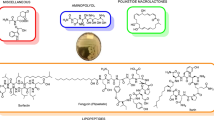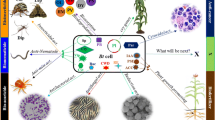Abstract
Brevibacillus laterosporus G4, which was isolated from soil sample, kills free-living nematodes (Panagrellus redivius) and plant-parasite nematodes (Bursaphelenchus xylophilus) and degrades their cuticle in previous bioassay. Our works for B. laterosporus G4 had demonstrated that an extracellular alkaline protease BLG4 played a key role as a pathogenic factor in infection against nematode. In this study, the nematicidal activity of BLG4 was further verified by an in vitro assay with purified recombinant BLG4. The encoding gene of BLG4 was cloned and showed high degree of homology with the subtilisin subclass of serine protease gene and another reported cuticle-degrading protease gene from nematophagous bacterium Bacillus sp. B16. Deletion of BLG4 by homologous recombinant had a significant effect on the pathogenicity of B. laterosporus. In infection assays the BLG4-deficient strain (BLG4-6) lost about 50% of its nematocidal activity and in toxicity tests the mortality rate of nematodes decreased with ∼56% in comparison to wild-type strain. This is the first report analyzing the function of a subtilisin enzyme involved in bacterium against nematode at the molecular level, and it is possible to use B. laterosporus as a model to study host-parasite interaction and to gain detailed knowledge of the infection process.




Similar content being viewed by others
References
Åhman J, Ek B, Rask L, Tunlid A (1996) Sequence analysis and regulation of a gne encoding a cuticle-degrading serine protease from the nematophagous fungus Arthrobotrys oligospora. Microbiology 142:1605–1616
Åhman J, Johansson T, Olsson M, Punt PJ, van den Hondel CA, Tunlid A (2002) Improving the pathogenicity of a nematode-trapping fungus by genetic engineering of a subtilisin with nematotoxic activity. Appl Environ Microbiol 68:3408–3415
Bird AF, Bird J (1991) The structure of nematode. 2nd edn. Academic Press, San Diego, CA
Bonants PJ, Fitters PF, Thijs H, den Belder E, Waalwijk C, Henfling JW (1995) A basic serine protease from Paecilomyces lilacinus with biological activity against Meloidogyne hapla eggs. Microbiology 141:775–784
Chang S, Cohen SH (1979) High frequency transformation of Bacillus subtulis protoplasts by plasmid DNA. Mol Gen Genet 168:111–115
Cox GN, Kusch M, Edgar RS (1981) Cuticle of Caenorhabditis elegans: its isolation and partial characterization. J Cell Biol 90:7–17
Decraemer W, Karanastasi E, Brown D, Backeljau T (2003) Review of the ultrastructure of the nematode body cuticle and its phylogentic interpretation. Biol Rev 78:465–510
De Oliveira EJ, Rabinovitch L, Monnerat RG, Passos LK, Zahner V (2004) Molecular characterization of Brevibacillus laterosporus and its potential use in biological control. Appl Environ Microbiol 70:6657–6664
Huang XW, Zhao NH, Zhang KQ (2004) Extracellular enzymes serving as virulence factors in nematophagous fungi involved in infection of the host. Res Microbiol 155:811–816
Huang XW, Niu QH, Zhou W, Zhang KQ (2005a) Bacillus nematocida sp. Nov., a novel bacterial strain with nematotoxic activity isolated from soil in Yunnan, China. Syst Appl Microbiol 28:323–327
Huang XW, Tian BY, Niu QH, Yang JK, Zhang LM, Zhang KQ (2005b) An extracellular protease from Brevibacillus laterosporus G4 without parasporal crystal can serve as a pathogenic factor in infection of nematodes. Res Microbiol 156:719–727
Maizels RM, Blaxter ML, Selkirk ME (1993) Forms and functions of nematode surfaces. Exp Parasitol 77:380–384
Niu QH, Huang XW, Tian BY, Yang JK, Liu J, Zhang L, Zhang KQ (2006) Bacillus sp. B16 kills nematodes with a serine protease identified as a pathogenic factor. Appl Microbiol Biotechnol 69:722–730
Reese MG (2001) Application of a time-delay neural network to promoter annotation in the Drosophila melanogaster genome. Comput Chem 26:51–56
Segers R, Butt TM, Kerry BR, Peberdy JF (1994) The nematophagous fungus Verticillium chlamydosporium Goddard produces a chymoelastase-like protease which hydrolyses host nematode proteins in situ. Microbiology 140:2715–2723
Siezen RJ, Leunissen JAM (1997) Subtilase: the superfamily of subtilisin-like serine proteases. Protein Sci 6:501–523
Singer S (1973) Insecticidal activity of recent bacterial isolates and their toxins against mosquito larvae. Nature 244:110–111
Singer S (1996) The utility of strains of morphological group II Bacillus. Adv Appl Microbiol 42:219–261
Singer S, van Fleet AL, Viet JJ, Genevese EE (1997) Biological control of the zebra mussel Dreissena polymorpha and the snail Biomphalaria glabrata, using Gramicidin S and D and molluscicidal strains of Bacillus. J Ind Microbiol Biotechnol 18:226–231
Spizizen J (1958) Transformation of biochemically deficient strains of Bacillus subtulis by deoxyribonucleate. Proc Natl Acad Sci USA 44:1072–1075
St Leger RJ (1995) The role of cuticle-degrading proteases in fungal pathogenesis of insects. Can J Bot 73:1119–1125
St Leger RJ, Frank DC, Roberts DW, Staples RC (1992) Molecular cloning and regulatory analysis of the cuticle-degrading-protease structure gene from the entomopathogenic fungus Metarhizium anisopliae. Eur J Biochem 204:991–1001
Tikhonov VE, Lopez-Llorca LV, Salinas J, Jansson HB (2002) Purification and characterization of chitinases from the nematophagous fungi Verticillium chlamydosporium and Verticillium suchlasporium. Fungal Genet Biol 35:67–78
Tunlid A, Jansson S (1991) Proteases and their involvement in the infection and immobilization of nematodes by the nematophagous fungus Arthrobotrys oligospora. Appl Environ Microbiol 57:2868–2872
Vgner V, Dervyn E, Ehrlich SD (1998) A vector for systematic gene inactivation in Bacillus subtilis. Microbiology 144:3097–3104
Vosman B, Kooistra J, Olijve J, Venema G (1986) Integration of vector-containing Bacillus subtilis chromosomal DNA by a campbel-like mechanism. Mol Gen Genet 204:524–531
Wells JA, Ferrari E, Henner DJ, Estell DA, Chen EY (1983) Cloning, sequencing, and secretion of Bacillus amyloliquefaciens subtilisin in Bacillus subtilis. Nucleic Acids Res 11:7911–7925
Westers L, Westers H, Quax WJ (2004) Bacillus subtilis as cell factory for pharmaceutial proteins: a biotechnological approach to optimize the host organism. Biochim Biophys Acta 1694:299–310
Yang JK, Huang XW, Tian BY, Wang M, Niu QH, Zhang KQ (2005). Isolation and characterization of a serine protease from the nematophagous fungus Lecanicillium psalliotae, displaying nematicidal activity. Biotechnol Lett 27:1123–1128
Zahner V, Rabinovitch L, Suffys P, Momen H (1999) Genotypic diversity among Bacillus laterosporus strains. Appl Environ Microbiol 65:5182–5185
Zhao ML, Mo MH, Zhang KQ (2004) Characterization of a neutral serine protease and its full-lenth cDNA from the nematode-trapping fungus Arthrobotrys oligospora. Mycologia 96:16–22
Acknowledgments
We thank Dr. Xiaowei Huang, Dr. Minghe Mo, Dr. Hong Luo, Dr. Hui Sun, Dr Linqian Dong, and Ms Qiuhong Niu, Kaihui Liu, Yanfang Liu for their help and advice in our studies. We also thank Yongjun Liu of the Yunnan University for his help in taking SEM-pictures and Professor Lan Ma of the Yunnan University for preparation of antisera. We are also indebted to Wei Zhou for her help during all the work and W. G. Dilantha Fernando for preparing this manuscript. The work was funded by projects from National Natural Science Foundation (approved No. 30500338) and Department of Science and Technology of Yunnan Province (approved Nos. 2005NG05 and 2005NG03).
Author information
Authors and Affiliations
Corresponding author
Rights and permissions
About this article
Cite this article
Tian, B., Li, N., Lian, L. et al. Cloning, expression and deletion of the cuticle-degrading protease BLG4 from nematophagous bacterium Brevibacillus laterosporus G4. Arch Microbiol 186, 297–305 (2006). https://doi.org/10.1007/s00203-006-0145-1
Received:
Revised:
Accepted:
Published:
Issue Date:
DOI: https://doi.org/10.1007/s00203-006-0145-1




